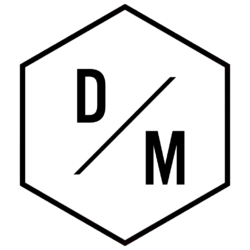Artificial intelligence has rapidly transitioned from experimental prototypes to pivotal enterprise tools, reshaping how organizations innovate, streamline operations, and engage customers. As AI integration becomes a CEO-level mandate across Fortune 500 companies and adoption spans 10% of global systems powered by OpenAI’s frameworks, building beyond flashy demos toward robust, scalable solutions demands a nuanced strategy. AI startups, unlike traditional SaaS, face unique challenges in delivering dependable products within complex enterprise landscapes. Their evolution offers vital insights into cultivating enduring partnerships that drive business value amid shifting market dynamics.
Enterprise AI Solutions: Bridging the Gap from Prototype to Reliable Product
Building AI products for the enterprise environment involves overcoming hurdles far beyond the initial prototype stage. While early demos often showcase impressive capabilities, translating these into substantive, dependable tools requires meticulous engineering to handle unpredictable user behavior, messy datasets, and the nuanced needs of sectors like accounting and legal, where accuracy and trustworthiness are paramount. This rigorous process includes orchestrating multiple state-of-the-art models, fine-tuning custom ones, and embedding extensive scaffolding to constrain and steer AI outputs effectively.
Leading enterprises such as IBM with IBM Watson, Microsoft, Nube de Google, y Servicios web de Amazon exemplify this approach, layering their AI offerings with robust integration and compliance features to meet stringent business standards. Their efforts highlight the necessity of deep customization to align AI applications with unique organizational policies, culture, and legacy systems rather than relying on generic, out-of-the-box models.
- Rigorous evaluation of AI model performance against specific enterprise tasks
- Integration of multiple AI models to optimize cost, speed, and scalability
- Fine-tuning smaller domain-specific models alongside large general models
- Embedding AI products into customers’ core workflows and systems
| Desafío | Acérquese a | Enterprise Example |
|---|---|---|
| Unpredictable user behavior | Comprehensive user scenario coverage and long-tail validation | IBM Watson’s healthcare diagnostics platform |
| Data inconsistency | Robust data preprocessing and real-time correction mechanisms | Google Cloud’s AI for financial auditing |
| Trust and accuracy | Human-in-the-loop auditing and rigorous compliance testing | Microsoft Azure AI in legal document processing |
Overcoming Model Commoditization Through Tailored AI Applications
Despite early concerns post-ChatGPT launches about AI products being mere “GPT wrappers,” commoditization is far from inevitable. Successful AI enterprises strategically balance exploiting cutting-edge model advances with building unique scaffolding and context-aware features that clearly demarcate product differentiation. Firms such as DataRobot y Palantir have demonstrated that embedding AI deeply into industry-specific workflows builds competitive advantages resilient to horizontal model improvements.
Deep vertical integration with existing business systems and proprietary data streams further erects barriers to commoditization, ensuring clients rely on these tailored platforms for critical business functions.
Scaling Enterprise AI: Insights into Accelerated Growth and Market Penetration
AI companies are achieving unprecedented growth trajectories, with leaders reporting year-over-year expansion rates exceeding 10x, significantly outpacing traditional SaaS benchmarks. This surge results from evolving enterprise buying behavior, where AI’s demonstrable ROI encourages buyers to proactively allocate larger budgets, often prioritizing transformational automation over conventional software licensing.
This trend is exemplified by companies achieving ARR milestones faster than their peers, a phenomenon underscored by observations from platforms like Stripe. AI products frequently displace labor expenses, hence securing larger contract sizes and accelerating adoption.
- Proactive enterprise AI purchasing mandates fueled by CEO-led initiatives
- Bigger budget allocations as AI replaces manual workflows
- Faster sales cycles driven by explicit AI-driven value propositions
- Expanded market opportunities through automation of previously manual tasks
| Motor de crecimiento | Impact on Enterprise AI | Ejemplo de vendedor |
|---|---|---|
| CEO-driven AI mandates | Shifted buying decisions, speeding procurement | Salesforce AI cloud services |
| Labor budget replacement | Higher contract values and faster contract approvals | NVIDIA AI inference platforms |
| Faster adoption cycles | Reduced time-to-value and accelerated ROI | OpenAI enterprise solutions |
Proliferation of AI Applications Driven by Cost Reductions and Tool Accessibility
The plummeting costs of AI compute resources, with OpenAI recently reducing model access costs by 80%, have democratized AI software creation. Tools like Cursor, Lovable, and Replit empower both technical and non-technical users to develop AI-powered applications rapidly, resulting in a flood of new solutions spanning personalized tools and niche enterprise workflows.
This shift creates fertile ground for enterprises to finally productize complex workflows that were once inefficiently managed by manual processes or brittle robotic process automation (RPA). As a consequence, vast new markets are emerging with AI as the growth enabler.
Speed and Momentum: Keys to Establishing Enterprise AI Market Leadership
In today’s competitive AI landscape, speed to market and sustained product momentum can establish formidable market leadership. Enterprises are inundated with AI solutions, favoring credible providers who demonstrate rapid delivery and reliable results. Early movers such as Cursor and ElevenLabs have leveraged velocity in product releases, customer acquisition, and brand building to secure lasting advantages over well-funded incumbents like Microsoft and Amazon.
- Accelerated product iteration cycles with continuous improvement
- Leveraging product-led growth for viral adoption
- Rapidly onboarding marquee enterprise clients
- Building brand recognition through consistent performance
| Speed Factor | Beneficio | Successful Example |
|---|---|---|
| Fast iteration | Maintains relevance amid evolving AI tech | ElevenLabs voice AI platform |
| Product-led growth | Rapid userbase expansion | Cursor coding assistant |
| Brand momentum | Enhanced market trust and customer loyalty | Harvey AI legal assistant |
Building Durable Moats Around Enterprise AI Solutions
To sustain an early market lead, AI companies emphasize creating defensible moats that transcend mere technology. Becoming a system of record, as seen with platforms investing heavily in vertical integrations like Tennr in healthcare or HappyRobot in logistics, ensures embeddedness in core operations. Workflow lock-in, supported by human-in-the-loop designs despite AI autonomy, creates psychological switching costs that preserve customer loyalty.
Furthermore, cultivating trusted relationships with enterprise buyers positions AI vendors as strategic partners deeply involved in shaping organizational AI roadmaps and compliance strategies. This relationship-building is crucial amidst the fast-evolving AI landscape dominated by giants like Nube de Google, IBM Watson, y Fuerza de ventas.
- Developing deep vertical system integrations for lasting engagement
- Embedding AI within daily operational workflows for lock-in
- Offering human oversight options to enhance reliability and trust
- Fostering strategic partnerships through trusted advisory roles
| Moat Strategy | Función | Ejemplo de industria |
|---|---|---|
| System of record | Core data repository, source of truth | Tennr in healthcare referrals |
| Workflow lock-in | Creates high switching costs | Decagon’s AI-driven support ticket management |
| Vertical integrations | Enhances operational embedding | HappyRobot’s freight voice AI integration |
| Customer relationships | Builds strategic advisory bonds | Palantir’s enterprise AI consulting |


